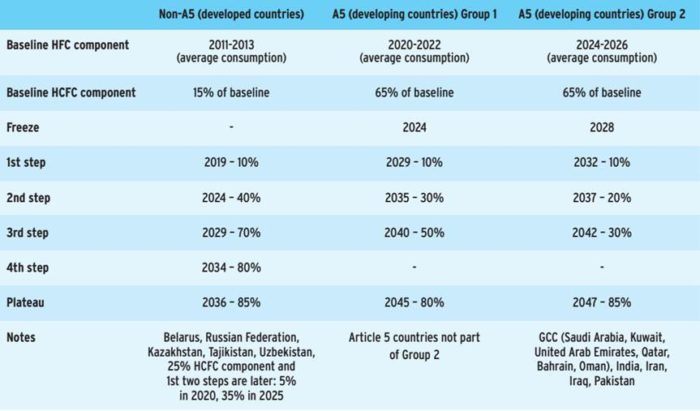Historic global deal to cut super-pollutant HFC gases



KIGALI: Parties to the Montreal Protocol have adopted an historic global agreement mandating controls on hydrofluorocarbon (HFC) consumption and production after eight years of protracted negotiations.
The agreement will avoid more than 70 billion tonnes of CO2-equivalent HFC emissions.
The Kigali Amendment will cap and phase down HFC consumption starting in 2019, with developed countries taking action first and developing countries starting in 2024.
Most developing countries, including China – by far the largest HFC consumer and producer – have committed to freeze HFC consumption in 2024. A second later schedule was agreed for a small number of countries including India, Kuwait, Pakistan and Saudi Arabia.
Clare Perry, EIA UK Climate Campaign Leader, said: “Compromises had to be made but 85 per cent of developing countries have committed to the early schedule starting 2024, which is a very significant achievement.
“According to our initial calculations this deal will avoid more than 70 billion tonnes of CO2e emissions by 2050 – which will be close to avoiding a half a degree of warming.”
Alexander von Bismarck, EIA US Executive Director, said: “The Kigali Amendment, with the Paris Agreement, gives 2016 the biggest one-two punch in the history of battling global warming. Still, with billions of tonnes of emissions left untouched, the ultimate power of the Kigali amendment now depends on accelerating the removal of these industrial climate-killers in upcoming meetings.”
The Agreement – in a nutshell

Standards – Parties are expected to work towards ensuring global industry standards enable the safe introduction of low-GWP alternatives to HFCs.
Energy Efficiency – Parties are expected to agree a way forward to maximise energy efficiency in the transition out of HFCs.
Technology review – in 2022 and every five years after. Additional technology review 4-5 years before 2028 to consider the compliance deferral of two years from the freeze of 2028 in A5 Group 2 to address growth in relevant sectors above certain threshold.
Notes to editors:
ends